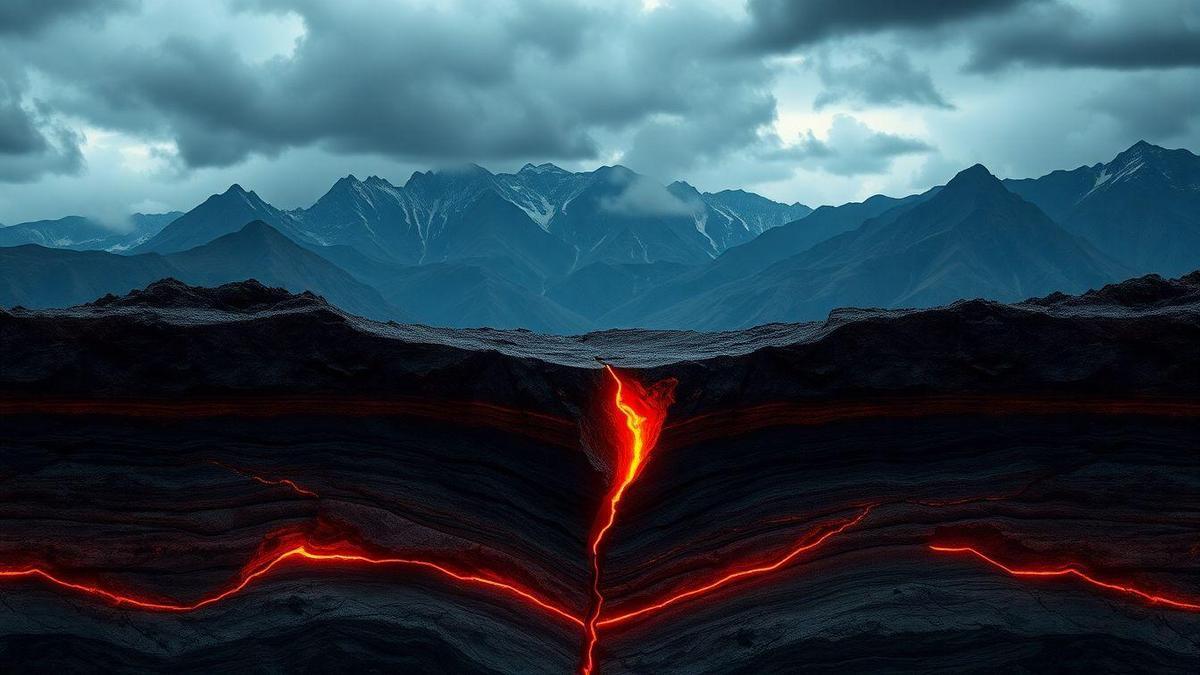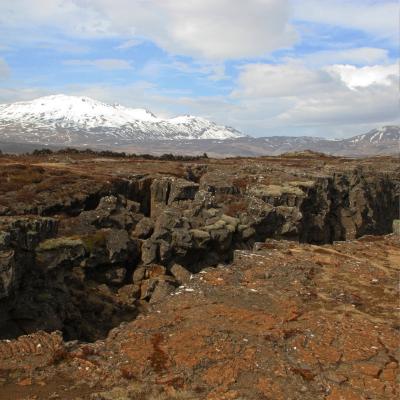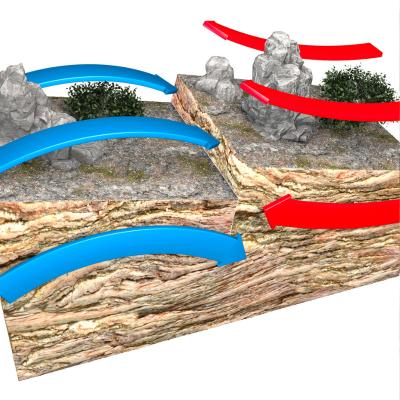Earthquakes are impressive natural phenomena, caused by deep forces that shape the Earth’s crust. They arise from the constant movement of tectonic plates, which collide, drift apart, or slide over one another. This underground dynamic results in the release of energy that we feel as tremors.
Understanding these movements is essential to predict risks, protect populations, and develop prevention technologies. By studying geology and seismic patterns, we can mitigate the impacts of these events. Thus, science becomes an ally in global safety and urban planning.

What are earthquakes and why do they happen
Earthquakes are tremors on the Earth’s surface caused by ruptures inside the Earth. These ruptures occur when the energy accumulated between tectonic plates is suddenly released. This release generates seismic waves that propagate through the crust.
Most earthquakes happen at the edges of tectonic plates, where there is greater tension. When this tension exceeds the rocks’ resistance limit, a rupture occurs. This process releases energy that moves in the form of vibrations.
There are different types of seismic waves, such as P, S, and surface waves. P waves are the fastest and the first to reach sensors. S waves, which are slower, cause greater destruction due to their intense lateral movement.
These waves are recorded by equipment called seismographs. Based on these records, scientists determine the location and intensity of the earthquake. This monitoring is essential for alerts and future analyses.
How tectonic plates move
Tectonic plates rest on the Earth’s mantle, which is partially fluid. Convection currents in this mantle move the plates, pushing them against each other. This process can last millions of years but generates immediate impacts.
There are three main types of movement between plates: convergent, divergent, and transform. In convergent movement, the plates collide, forming mountains or subduction zones. In divergent movement, they drift apart, creating new crust.
Transform movement occurs when plates slide laterally past each other. A famous example is the San Andreas Fault in the United States. These zones are prone to intense earthquakes due to accumulated friction.
These movements shape the Earth’s landscape, creating oceans, mountain ranges, and valleys. Therefore, understanding how plates behave is fundamental to understanding the planet’s dynamics. Plate tectonics is one of the foundations of modern geology.
Impacts of earthquakes on society
Earthquakes can cause immense damage to cities and entire communities. Buildings may collapse, infrastructure may be destroyed, and lives may be lost. The impact varies according to the tremor’s intensity and the affected region’s preparedness.
In densely populated urban areas, the risks are even greater. Transport, energy, and communication systems may be disrupted. In addition, public panic can worsen the emergency situation.
The social effects go beyond physical destruction. Communities may be displaced, creating humanitarian crises. The economic costs of reconstruction and aid are also enormous, affecting local development.
That’s why public policies for prevention and risk management are essential. Actions such as building codes and alert systems can save lives. Preparation and awareness are the best defenses against these natural disasters.
How earthquakes and tectonic plate movement work

Earthquakes are natural phenomena that occur due to the movement of tectonic plates, large blocks of rock that make up the Earth’s outer layer. These plates are in constant motion, floating on the Earth’s mantle, which is made of molten and semi-solid rock. When tectonic plates move, they may collide, drift apart, or slide over one another. These movements generate a huge amount of energy which, when released, causes earthquakes. Most earthquakes occur along tectonic plate boundaries, where the accumulated tension is greatest.
The point where the energy is released is called the focus or hypocenter of the earthquake, and the point directly above it on the Earth’s surface is known as the epicenter. The released energy propagates in the form of seismic waves, responsible for the tremors felt on the surface. There are different types of seismic waves, including primary (P) waves, secondary (S) waves, and surface waves, each with distinct speed and movement characteristics. P waves are the fastest and the first to be detected by seismographs, while S waves are slower and cause more damage due to their lateral movement.
The movement of tectonic plates is driven by the Earth’s internal heat, which causes convection currents in the mantle. These currents create forces that can pull or push the tectonic plates, resulting in different types of plate boundaries: convergent, divergent, and transform. At convergent boundaries, the plates collide, possibly forming mountains or causing subduction, where one plate is forced beneath another. At divergent boundaries, the plates move apart, allowing magma to rise and form new oceanic crust. At transform boundaries, plates slide laterally past one another, as observed in the San Andreas Fault in California.
In addition to earthquakes, the movement of tectonic plates is also responsible for other geological phenomena, such as the formation of volcanoes and the creation of mountain chains. Understanding these processes is essential for predicting earthquakes and mitigating their impacts. Seismology, the science that studies earthquakes and seismic waves, plays a crucial role in identifying risk areas and developing disaster preparedness and response strategies. With advancing technology, scientists are increasingly capable of monitoring tectonic plate movement and predicting seismic events with greater accuracy.
Advantages of understanding tectonic plate movement
Understanding the movement of tectonic plates brings numerous advantages, especially in terms of safety and urban planning. One of the main advantages is the ability to predict seismic risk areas. By identifying regions where tectonic plates are more likely to move, scientists can help governments and communities better prepare for potential earthquakes. This includes implementing stricter building codes to ensure that buildings and infrastructure are designed to withstand tremors, thereby minimizing damage and saving lives.
Another significant advantage is the protection of natural and cultural heritage. By understanding how tectonic plate movement can affect certain regions, it is possible to take measures to protect ecologically and historically important areas. For example, preserving archaeological sites in seismic risk zones can be prioritized, ensuring these precious locations are maintained for future generations. Additionally, the management of natural resources, such as water and minerals, can be optimized based on knowledge of tectonic processes, ensuring sustainable exploration.
Understanding tectonic plate movement also plays a vital role in education and public awareness. Educating communities about the risks associated with earthquakes and how to prepare for them can significantly reduce the impact of these events. Awareness campaigns and educational programs can teach people about safety practices during an earthquake, such as “drop, cover, and hold on,” as well as promote the importance of emergency kits and evacuation plans. This ongoing education strengthens community resilience and increases the response capacity in emergency situations.
Finally, the study of tectonic plate movement contributes to scientific and technological advancement. Ongoing research in this area leads to the development of new monitoring and forecasting technologies, such as more sensitive seismographs and early warning systems. These advances not only improve our ability to predict and respond to earthquakes but can also be applied to other scientific fields, such as space exploration and materials engineering. Thus, knowledge of tectonic plates not only benefits human safety and well-being but also drives scientific and technological innovation.
How to prepare for earthquakes and tectonic plate movement

Preparing for earthquakes and the effects of tectonic plate movement is essential to minimize risks and ensure safety. Here are some practical measures that can be adopted:
Education and Awareness: Participate in earthquake education programs to understand the risks and safety measures. Knowing the correct procedures during an earthquake can save lives.
Family Emergency Plan: Develop an emergency plan that includes evacuation routes, meeting points, and emergency contacts. Make sure all family members know the plan.
Emergency Kit: Assemble an emergency kit with essential items such as water, non-perishable food, flashlights, batteries, medication, and important documents. Keep the kit in an easily accessible place.
Inspection and Structural Reinforcement: Check the structural safety of your home or workplace. Consider reinforcing older buildings to make them more resistant to tremors.
Participation in Drills: Take part in earthquake drills organized by local authorities or schools. These activities help practice quick and effective responses during a real event.
Early Warning Systems: Stay alert to early warning earthquake systems available in your area. These systems can provide precious seconds to seek shelter.
Properly preparing for earthquakes and understanding tectonic plate movement can make a big difference in personal and community safety. By adopting preventive measures and participating in educational programs, communities can increase their resilience and response capacity to natural disasters. Ongoing preparation and awareness are key to minimizing the impacts of earthquakes and protecting lives and property.
Frequently asked questions
What are earthquakes?
Earthquakes are ground tremors caused by sudden movements of tectonic plates. They can cause a lot of destruction.
How do tectonic plates move?
Tectonic plates move slowly, but sometimes they slide or collide, leading to what we call earthquakes. It all happens beneath our feet.
Where do most earthquakes occur?
Earthquakes generally happen near the edges of tectonic plates. Some regions, like the Pacific Ring of Fire, have many earthquakes.
Can we predict earthquakes?
We still can’t predict earthquakes precisely. Scientists can study patterns and give warnings, but not exact forecasts.
Is it common to feel an earthquake?
We don’t always feel small earthquakes, but it happens. If you live near a fault or plate boundary, you might feel them more often.
Se precisar de algo mais, posso continuar ajudando!
